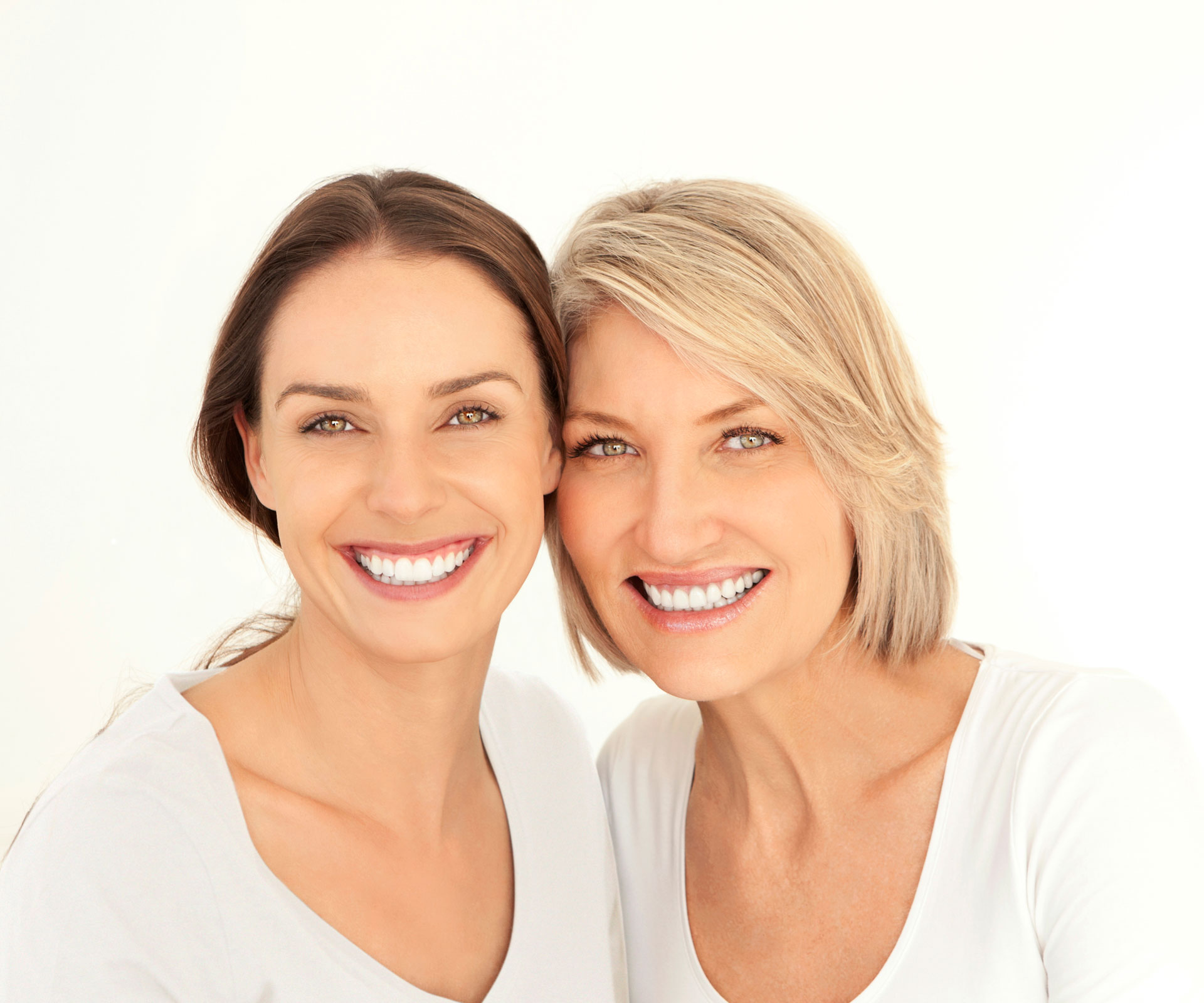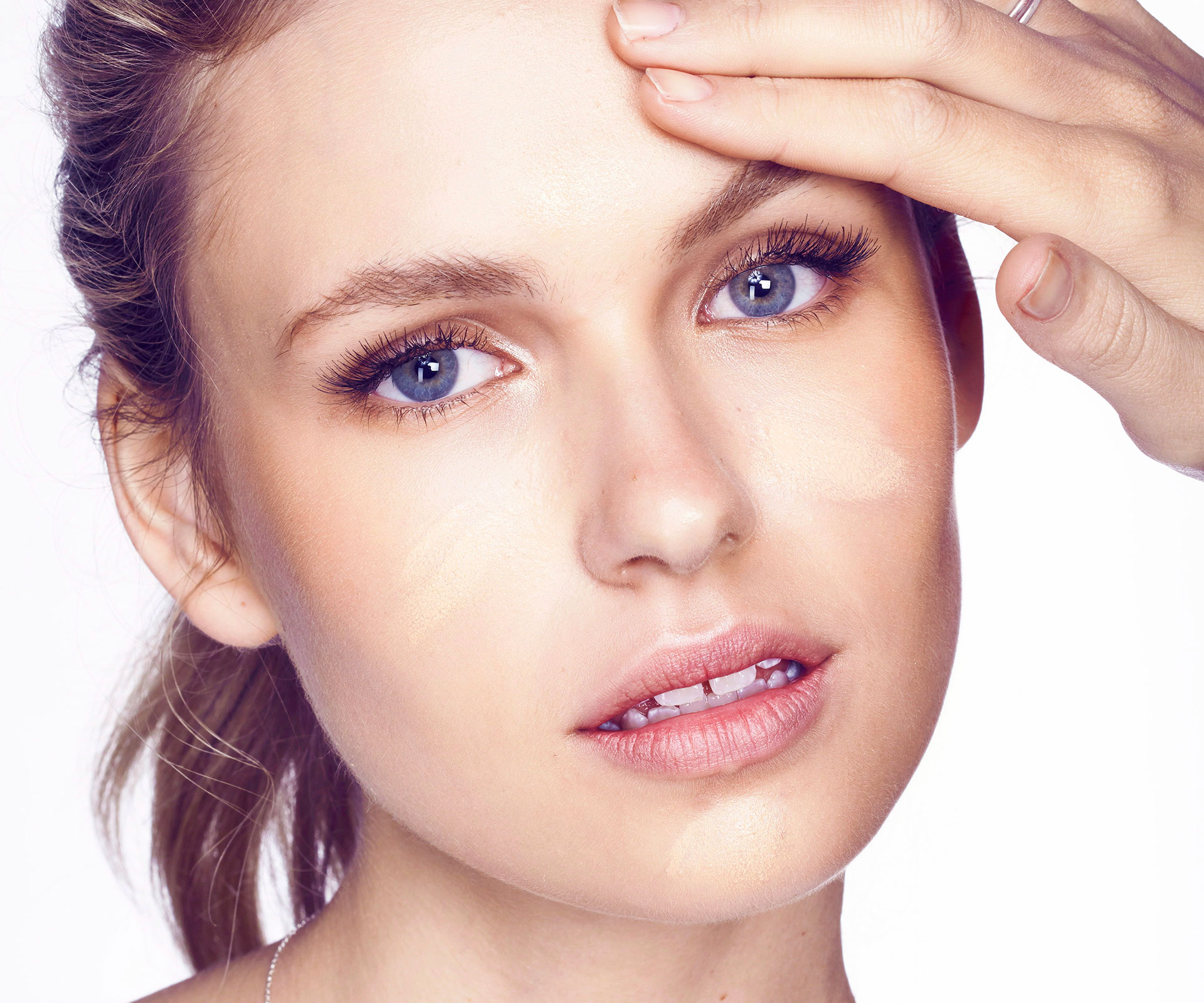If we could bottle youth in a jar, would we? It’s a question you may have pondered over the years, particularly following the arrival of those sneaky ‘laugh lines’.
What is important to remember is that those lines tell a story – your story – charting your growth through life. And while the blogosphere is filled with Gen-Y instagrammers flaunting their ‘wrinkle-free’ lifestyle, and the quest for eternal youth is still very much in evidence, there is a Botox backlash forming – and a new breed of women are changing the way we view ageing.
Leading the charge are FAB (Fifty And Beyond) women, who know that while they can’t completely reverse the signs of ageing, they can maintain the best version of themselves – as opposed to a younger version. They are celebrating the skin they are in now, and maintaining a holistic lifestyle with a little help from the odd ingredient-packed, age-rejuvenating jar.
Corinne Morley, the in-house beauty expert at New Zealand natural skincare range Trilogy, observes that women in their 40s and beyond “don’t so much want to look younger any more”. She adds, “What they do want is to celebrate and care for the skin they have now and look and feel their best in a more natural way.
The belief is, ‘If I feel good, I know I will look better!’”
To have beautiful skin well into our 50s, nature and nurture need to go hand in hand. We all age differently, and by starting in your 30s with a good skincare routine, while paying attention to the naturally occurring changes in your body, you can find a way to maintain a FAB-ulous you!
30s

In our early 20s, cell turnover is rapid, allowing skin to look and feel plump and firm. By our 30s, however, life’s big challenges – juggling careers, family and general pressure – can cause stress and hormonal fluctuations in the skin, leading to breakouts or ‘adult acne’. At this stage, collagen and elastin production is slowly decreasing too, causing fine lines and wrinkles.
Caroline Parker, Head of Education for Dermalogica New Zealand, points out that our 30s are quite a benchmark for change in the skin. “Natural collagen production starts to slow by about one per cent, and cell turnover reduces, going from a 28 to 35-day turnover to 40 to 45, causing dull, dry skin and wrinkles.”
Loss of lipids (or ceramides) is a further age-related change that occurs. These lipids form a barrier on the skin and help keep it hydrated; as they decline we can lose our natural ability to keep skin moisturised. Add external factors such as climate, pollution, stress or even using products that are too harsh, and the skin becomes noticeably more dull and dehydrated.
“This is the time to look at getting extra hydration help with a serum and an eye cream,” says Caroline. Serums have a high dose of active anti-ageing ingredients, including antioxidants, peptides and skin brighteners.
They are best used after an eye cream and before moisturiser.
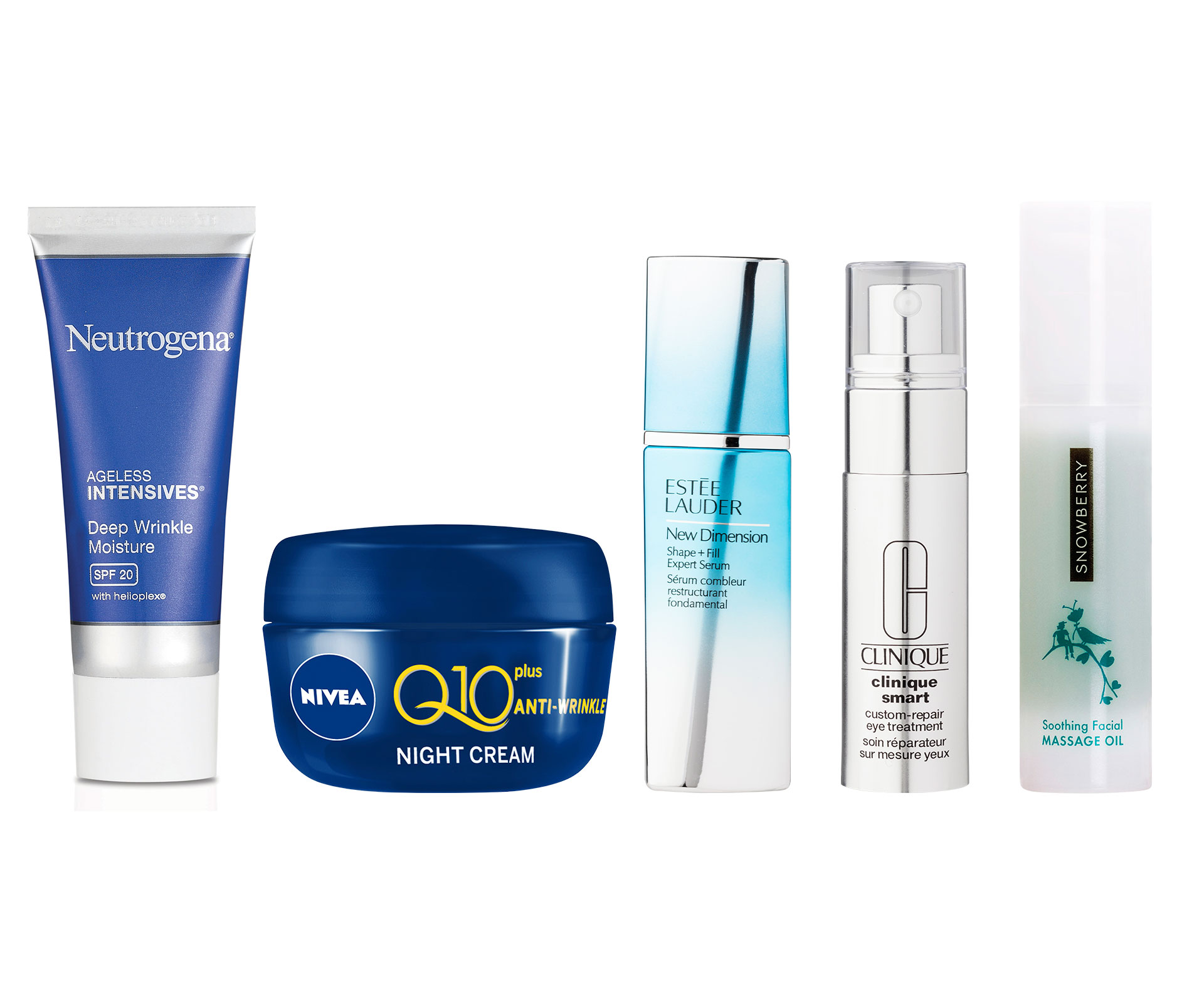
From right to left: Neutrogena Ageless Intensives Deep Wrinkle Moisture, SPF20, $35. Nivea Q10 Plus Anti-Wrinkle Night Cream, $20. Estée Lauder New Dimension Shape+Fill Expert Serum, $174. Clinique Smart Custom-Repair Eye Treatment, $95. Snowberry Soothing Facial Massage Oil, $37.
Know your skin:
While you can’t control the type of skin you inherit, you can control the damage you inflict. “Knowing what you are genetically prone to can go a long way towards understanding how your skin will age,” says Caroline.
“For example, someone with olive skin will produce more pigment than someone with fair skin – olive skin is therefore genetically prone to pigmentation, while fair skin, in contrast, is prone to rosacea. If you know what your skin is at risk of from a young age, then you’ll hopefully be more vigilant and better prepared later in life.”
Skin rejuvenating tips:
Cleansing and toning is critical to any beauty routine.
Use a gentle exfoliation product to wipe away dead skin cells and rejuvenate your skin. Make this part of your routine at least once a week.
Boost hydration by applying a moisturiser in the morning and a night cream in the evenings.
Introduce an eye cream and serum to your daily routine – morning and night.
Sun damage is one of the leading concerns among New Zealand women, so the number one rule is to use an SPF 30+ at least, all year round. Find one you like the texture of – that way you’re sure to want to wear it every day.
Drink plenty of water to hydrate your skin from within.
Remember, skin changes seasonally, so keeping abreast of the year-round changes in your skin can go a long way to treating it.
Words of wisdom can work wonders – teach your tween to wear sunscreen daily, including on the often neglected, but regularly exposed areas of hands and décolletage (that includes you too!).
Regular facials and masks are perfect for rejuvenating your skin.
Don’t forget that lips are another tell–tale sign of ageing. They need to be moisturised regularly – particularly in the colder months.
40s

At this stage in life, cell turnover is continuing to decrease, and the skin retains less and less moisture – making it dull. Dark spots or hyperpigmentation can also start to appear.
Sheryll Thompson, Elizabeth Arden’s National Training Manager in New Zealand, points out hormonal changes in these perimenopausal years slow the skin’s oil production, leaving it drier.
“There is also a natural decrease in collagen and elastin production, which reduces the skin’s elasticity and thickness,” she adds. This ‘dermal breakdown’, causes lines and wrinkles, as skin becomes slacker and less firm. “Many women will notice an increase in lines around the eyes, between the brows, on the forehead, and around the mouth,” says Sheryll.
Products with ingredients such as vitamins A, C and E will help maintain collagen production and lessen the depth of lines and wrinkles, plus gently lift and firm the skin. Exfoliation is important, as the cells are hanging around on the skin longer; try one with lactic acid, which can brighten as well as exfoliate.

From right to left: Elizabeth Arden Prevage Anti-Aging Wrinkle Smoother, $119. Dermalogica Breakout Control, $79. Snowberry Nourishing Exfoliator, $48. Dr Hauschka Night Serum, $75. 5. The Body Shop Vitamin C Glow Boosting Moisturiser, $65.
Application is key:
Want to get the best out of your rejuvenating products?
Correct application helps. Caroline Parker recommends using toner immediately after cleansing, and while your skin is still damp from the toner, apply your eye cream and serum.
“The toner acts as a skin conditioner, it evens out the porosity of the skin and you get better absorption from your following products,” she says. “The time period before you apply your moisturiser will depend on the purpose and consistency of the serum. For instance, some oil-free gel serums are quickly absorbed, so you would apply your moisturiser immediately after application. A more creamy serum would need a minute or so for absorption before following with your prescribed moisturiser.”
Suffering from mature age breakouts?
Rather than lathering on a facial wash that can strip the skin of vital moisture, use a spot treatment instead to target only the areas that need it.
50s & beyond
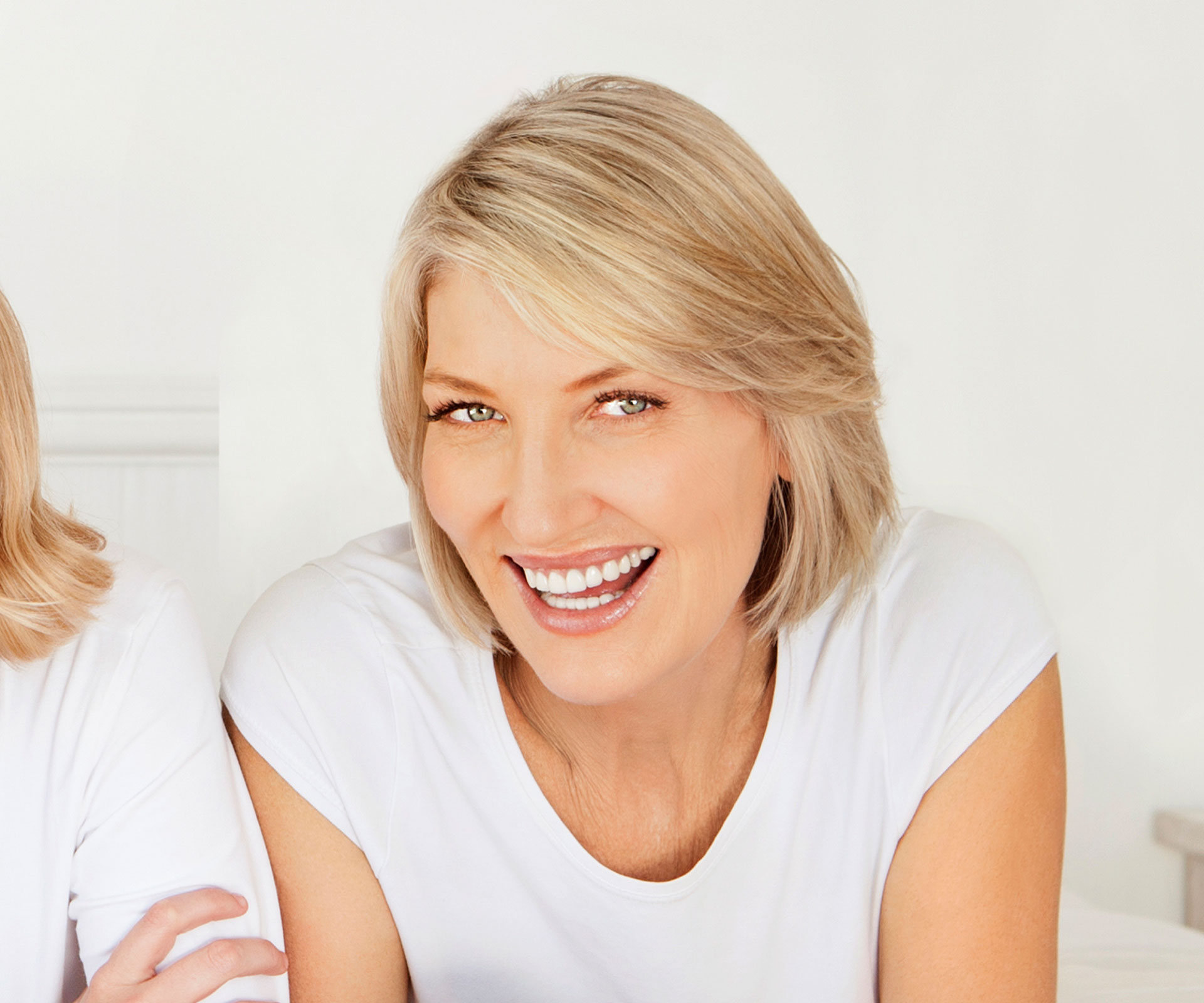
As you enter your 50s, oestrogen levels are declining and causing hormonal fluctuations. Skin loses its firmness and tone, as cells are now only turning over every 60 to 90 days. It can become thin, sensitive and red with capillary damage.
“These hormonal fluctuations can have a dramatic effect on our skin,” says Dermalogica’s Caroline Parker, “particularly if you are prone to redness naturally – those bursts of heat can be quite challenging.”
She recommends using a calming serum or cooling mist to help skin recover from hot flushes and inflammation.
Age spots and pigmentation are more prominent in our 50s and our oil glands produce less and less sebum.
“The decrease in surface moisture impairs the skin’s ability to protect itself, leading to excessive dryness,” says Elizabeth Arden beauty expert Sheryll Thompson. “It’s about upping the moisture levels to replenish, nourish, strengthen and brighten your skin.”

Elizabeth Arden Ceramide Lift and Firm Day Cream, $145. Shiseido Ultimune Power Infusing Concentrate, $118. Dermalogica Ultracalming Mist, $64. Trilogy Age-Proof CoQ10 Eye Recovery Concentrate, $40. Clarins Super Restorative Night, $173.
Latest advances:
Beauty companies are constantly pushing the envelope when it comes to anti-ageing products that deliver dramatic results. Increasingly, the need for needles is reduced, thanks to these little miracle workers.
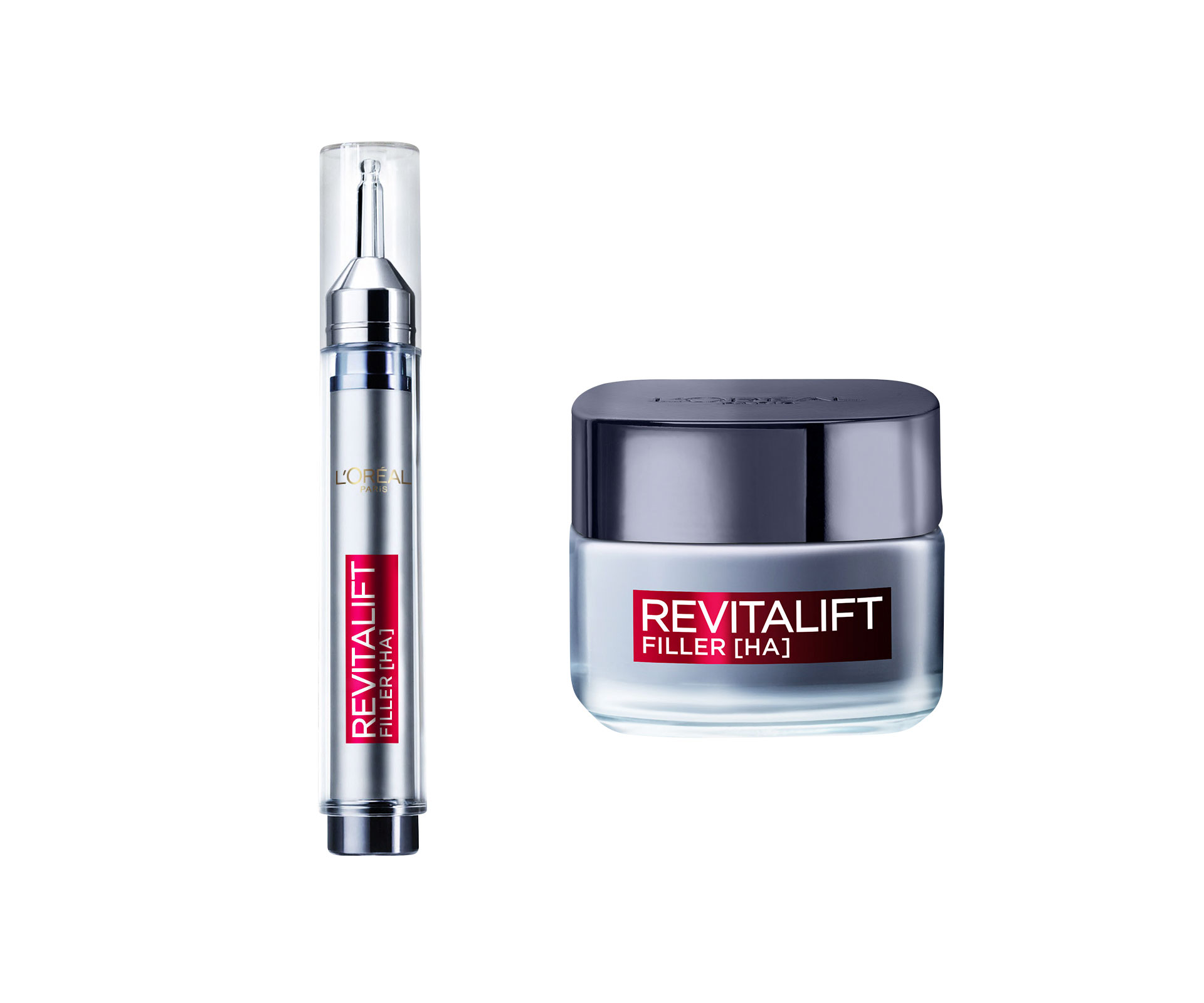
From left to right: L’Oréal Paris Revitalift Filler [HA] Revolumising Hyaluronic Concentrate Serum, $50. L’Oréal Paris Revitalift Filler [HA] Anti-Ageing Revolumising Moisturiser, $50.
The latest to catch our attention is the L’Oréal Paris Revitalift Filler, which is inspired by the science of hyaluronic injections.
A highly concentrated product, it aims to revive plumpness and fill in wrinkles.
All prices are approximate.
Photos: Getty Images and Bauer Studio (NZ)
